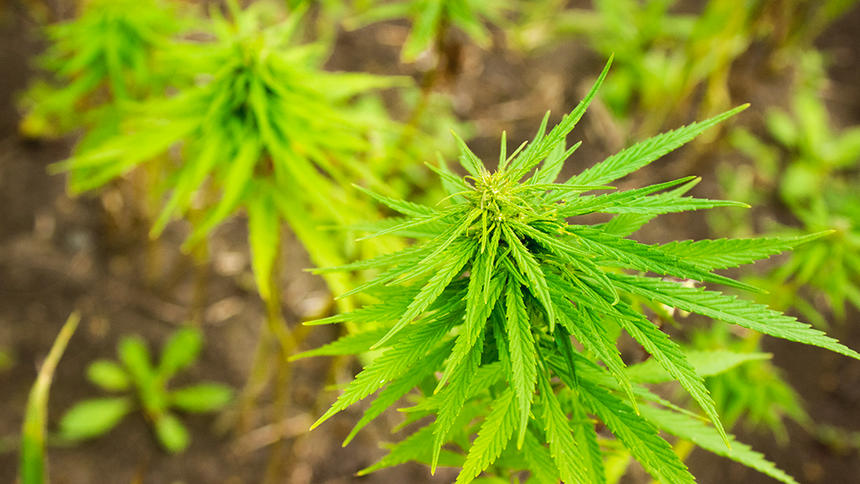Katelyn Baker
Well-Known Member
Langdon, N.D. - Sometimes the weather won't cooperate with farmers. Sometimes it refuses to cooperate with agricultural researchers, too.
Heavy and frequent rains this summer devastated the industrial hemp research plot at the North Dakota State University Langdon Research Extension Center. The inordinate precipitation killed many of the hemp plants and severely limited the growth of remaining plants, so researchers will learn very little to nothing from the plot.
"I don't know if we're even going to harvest it," says Bryan Hanson, a researcher at the extension center in Langdon, a farm town of 1,800 near the Canadian border.
The Langdon center launched the industrial hemp project in 2015 because of increasing interest, in North Dakota and elsewhere, in raising the crop, which has a wide range of uses.
Industrial hemp once was widely grown in the U.S., and was treated like other crops by the U.S. Department of Agriculture. But for decades, growing hemp wasn't allowed without a permit from the U.S. Drug Enforcement Administration and the DEA's last such permit, for a quarter-acre experimental plot in Hawaii, expired in 2003.
The 2014 federal farm bill allowed states to set up pilot growing programs, however, and research at the center is an important part of North Dakota's effort. Canadian farmers already grow hemp, which contributed to the Langdon research center's selection as site of the test plots.
The 2015 test plot at Langdon produced a thick stand of head-high hemp plants, allowing Hanson and other researchers to start learning about hemp. They hoped to build on that this year.
A wet 3.5 months
The Langdon area averages about 18 inches of precipitation annually. This year, it's received that much since May. "A year's worth of precipitation in just 3½ months," Hanson says.
Heavy rain in May, soon after the 2016 crop was planted, led researchers to replant the test plots. But continued rains crippled the replanted hemp. Chemical drift - from a field that's not part of the extension center - worked against the hemp, too, though excessive moisture was the bigger problem, Hanson says.
"Well, we've learned that hemp doesn't like too much moisture," he says half-facetiously, adding, more seriously, that the 2016 work provides some useful data on early stand establishment.
Overall, though, this year's test plot will provide only a fraction of the data that researchers had hoped for.
"It's disappointing," he says. "We really were hoping we'd be able to learn more that we could pass on to growers."
Despite this year's unavoidable frustration, the Langdon center remains committed to its industrial hemp project.

News Moderator: Katelyn Baker 420 MAGAZINE ®
Full Article: 2016 Research A Wash-Out For North Dakota Industrial Hemp Program
Author: Jonathan Knutson
Contact: (800) 477-6572 ext. 1236
Photo Credit: Nick Nelson
Website: Agweek
Heavy and frequent rains this summer devastated the industrial hemp research plot at the North Dakota State University Langdon Research Extension Center. The inordinate precipitation killed many of the hemp plants and severely limited the growth of remaining plants, so researchers will learn very little to nothing from the plot.
"I don't know if we're even going to harvest it," says Bryan Hanson, a researcher at the extension center in Langdon, a farm town of 1,800 near the Canadian border.
The Langdon center launched the industrial hemp project in 2015 because of increasing interest, in North Dakota and elsewhere, in raising the crop, which has a wide range of uses.
Industrial hemp once was widely grown in the U.S., and was treated like other crops by the U.S. Department of Agriculture. But for decades, growing hemp wasn't allowed without a permit from the U.S. Drug Enforcement Administration and the DEA's last such permit, for a quarter-acre experimental plot in Hawaii, expired in 2003.
The 2014 federal farm bill allowed states to set up pilot growing programs, however, and research at the center is an important part of North Dakota's effort. Canadian farmers already grow hemp, which contributed to the Langdon research center's selection as site of the test plots.
The 2015 test plot at Langdon produced a thick stand of head-high hemp plants, allowing Hanson and other researchers to start learning about hemp. They hoped to build on that this year.
A wet 3.5 months
The Langdon area averages about 18 inches of precipitation annually. This year, it's received that much since May. "A year's worth of precipitation in just 3½ months," Hanson says.
Heavy rain in May, soon after the 2016 crop was planted, led researchers to replant the test plots. But continued rains crippled the replanted hemp. Chemical drift - from a field that's not part of the extension center - worked against the hemp, too, though excessive moisture was the bigger problem, Hanson says.
"Well, we've learned that hemp doesn't like too much moisture," he says half-facetiously, adding, more seriously, that the 2016 work provides some useful data on early stand establishment.
Overall, though, this year's test plot will provide only a fraction of the data that researchers had hoped for.
"It's disappointing," he says. "We really were hoping we'd be able to learn more that we could pass on to growers."
Despite this year's unavoidable frustration, the Langdon center remains committed to its industrial hemp project.

News Moderator: Katelyn Baker 420 MAGAZINE ®
Full Article: 2016 Research A Wash-Out For North Dakota Industrial Hemp Program
Author: Jonathan Knutson
Contact: (800) 477-6572 ext. 1236
Photo Credit: Nick Nelson
Website: Agweek


